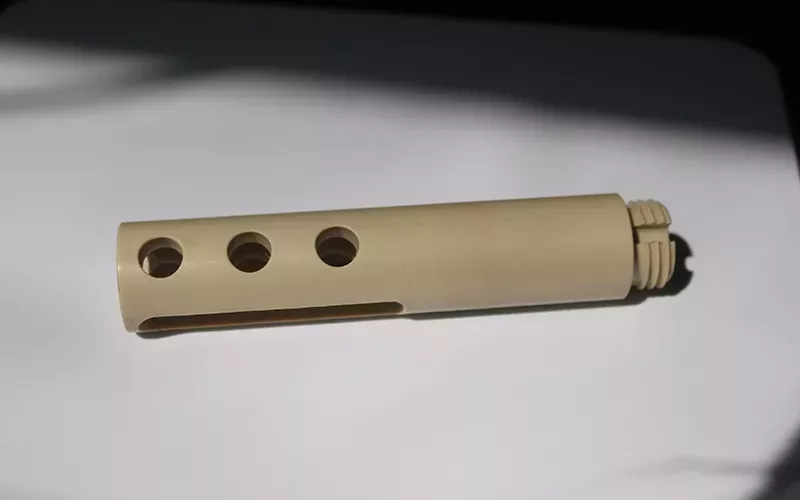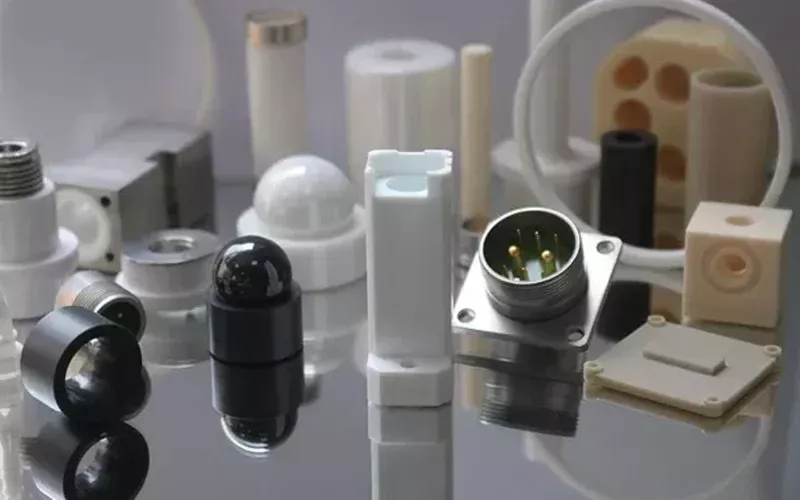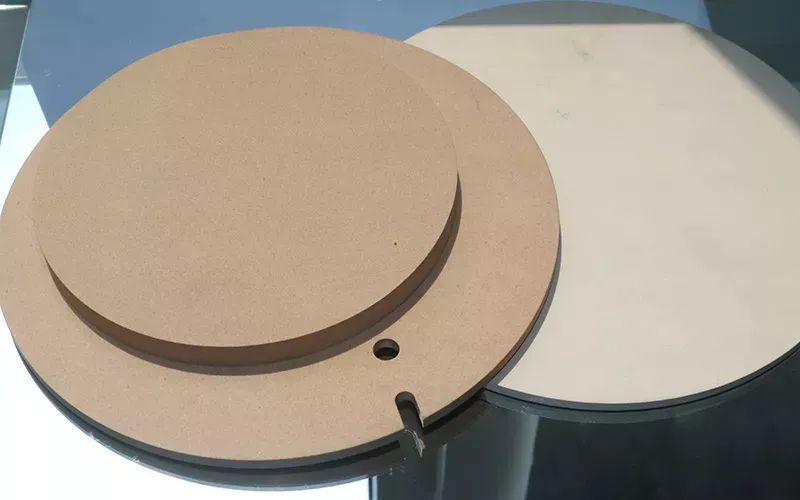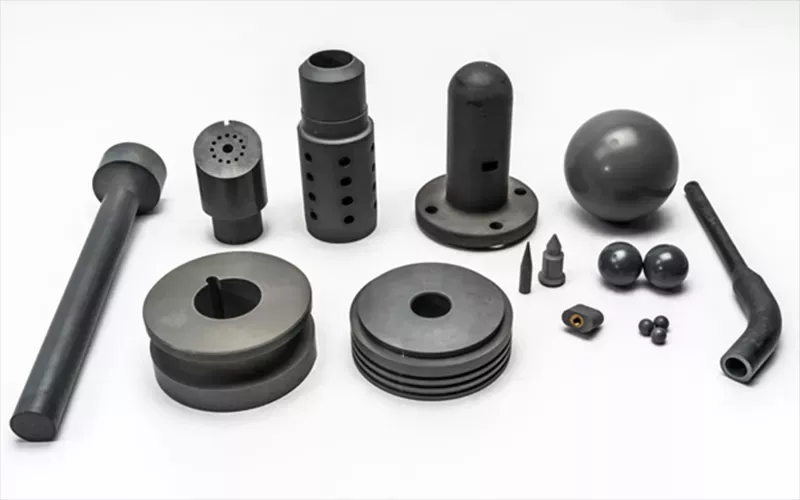As the world is progressing towards development, innovation is everywhere. With the introduction of advanced processing methods, a special type of ceramics is now prevailing in the industries. In this unique article, we will discuss the most demanding and unique type of ceramics which is none other than Technical Ceramics.
What are Technical Ceramics?
Technical ceramics are advanced types of ceramics that are known by various names. They are known as advanced ceramics or engineered ceramics, in the market. Some manufacturers also use the term high-performance ceramics and precision ceramics for them. No matter which term is used, they all refer to the same thing.
Technical ceramics are defined as inorganic ceramic materials. They are advanced types of ceramics that are made up of unique elements including O2 (Oxygen) and AI (Aluminium). They possess the highest mechanical, electrical, and thermal properties. Such properties can be controlled by addition of other minor elements. The combination of their thermal and physical properties makes them the best choice for products where other alternatives fail.
They are manufactured by synthetic or naturally formulated materials. Technical ceramics are called advanced ceramics because the ingredients required in the manufacturing process are highly purified. The ingredients are carefully refined to control particle shape and size. They are used in various industries for manufacturing a variety of products that are used in our everyday life.
Material Categorizing of Technical Ceramics:
Advanced, technical or high-performance ceramics can be classified into the following types:
- Composite Material: It includes fiber reinforced material, combination of non-oxides, oxides and other material as well as particulate reinforced material.
- Oxides: It includes the elements like Zr, Be, Al2O3, etc.
- Non-Oxides: Nitrides, carbides, etc. fall in the category of non-oxides.
Why are Advanced Ceramics So Popular?
No doubt, as the world is progressing towards development, the demand and scope of technical ceramics or engineering ceramics are also rising. Defined as polycrystalline materials, they are becoming very popular worldwide.
The first reason why they are in demand is because they are opening up new opportunities for various applications. For example, plant and mechanical engineering, automotive manufacturing, foundries, electronics, textile manufacturing, and medical technology.

Also, the requirements from the consumer for various industries are progressing rapidly from one year to the next. Therefore, various engineers and builders prefer advanced and high-quality material like technical ceramics to solve all their demands and requirements. Besides being used in above mentioned fields, the use of technical ceramics will also span to nanotechnology and optical industries.
Lastly, the demand for technical or precision ceramics is rising in numerous industries because they are highly customizable. High-quality precision ceramics manufactured by professional companies are now replacing ordinary materials for diverse applications.
Previously, the companies used ordinary refractory materials and polymers, but now they are widely shifting to technical ceramics.
What are The Important Properties of Technical Ceramic Materials?
Some important properties of technical ceramics are listed hereunder:
- Compressive Strength
When technical ceramics are compressed, they exhibit exceptionally high strength. Technical ceramics can hold high loads minimum of 4000 MPa (MPa stands for Megapascals). However, when you compare this with other materials like zirconium or titanium, you can imagine how strong technical ceramics are.
- Wear Resistance
Advanced types of precision or technical ceramics can also bear high temperatures. Besides bearing high temperatures, they can also effectively maintain their mechanical and electrical properties. That’s the reason why technical ceramics are used in numerous applications with high heat ejection. Examples include cutting tools, furnaces, and jet engines.
- Hardness
No doubt, technical ceramics have won the hearts of high-end users due to their great stiffness and excellent hardness. Manufacturers are shifting their priority to technical ceramics because this unique material is 4x more harder as opposed to stainless steel.
- Density
Technical ceramics have densities ranging from 2 g/cc. Due to low density, technical ceramics are preferred over other materials for various applications. As you know, Low density contributes to low weight. The lower the density, the less will be the weight of the substance.
- Temperature Ability
According to data, various types of advanced ceramics can bear temperatures of more than 3182°F (1750°C). Because they can bear high temperatures, they fall in the category of ultra-high temperature material. Due to their high temperature bearing ability, they can be used in various engines, turbines, as well as in bearings.
- Corrosion Resistant
No doubt, technical ceramics are chemically stable materials. But why? The answer lies in their chemical bonding. In most technical ceramic materials (especially oxides), ionic bonds are dominant, which makes the material rich with corrosion-resistant properties.
- Thermal Conductivity or Insulation
Technical ceramics can have different thermal conductivity or insulation properties. Such properties depend upon the chemical composition of the material. For instance, some types of technical ceramics have superior thermal conductivity properties. Such products are best for heat sinks or exchangers.
On the other hand, some technical ceramic products have insulating properties. In short, technical ceramics are highly flexible/customizable.
Other important properties include biocompatibility, flexural strength, metalization, piezo-electricity and dynamics, Thermal shock and fluctuation resistance, etc.
Difference Between Technical Ceramics And Traditional Ceramics
Now that we’ve explored their unique properties, let’s look at how these advanced materials differ from traditional ceramics. The uses and manufacturing processes of these two types of ceramics are very different, and each has its own advantages. Below, we’ll explore the differences between them in more detail.
1.Composition:
The main difference between technical ceramics and traditional ceramics is the composition. The formula materials of technical ceramics are mainly various carbides, oxides, nitrides, such as aluminum oxide, silicon nitride, silicon carbide, etc., in addition, it also contains many synthetic materials.
The manufacturing and processing of traditional ceramics use different types of raw materials (such as: silica, clay and feldspar).
2.Performance:
Another big difference between technical and traditional ceramics is the performance. Traditional ceramics are used in limited applications. For example,mid-range electrical insulations. But why are they used in mid-range processes and not in high-end tasks?
The reason behind this is because traditional ceramics generally have low-to-medium hardness. Besides little hardness, they also possess low strength and low thermal equilibrium. On the contrary, due to unique properties, technical ceramics are designed for demanding applications.
3. Processing:
Lastly, advanced ceramics differ significantly from conventional ones in terms of processing. Traditional ceramics are typically shaped using basic methods like casting, then fired at high temperatures to finalize their form. In contrast, high-performance ceramics require specialized techniques. These methods vary by industry, with common approaches including precision machining and powder compaction.
The Bottom Line:
Technical ceramics are considered as inorganic non-metallic objects. Undoubtedly, the application of these advanced ceramics in various industries is growing day by day. Thanks to its unique properties, they are in great demand across the globe. Manufacturers and high-end users are using it to replace commonly used materials due to its unique properties.


